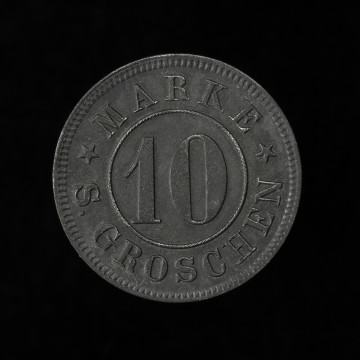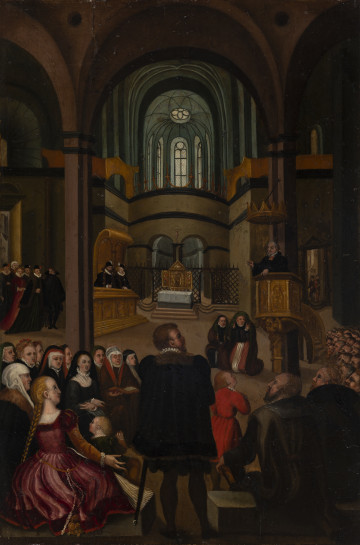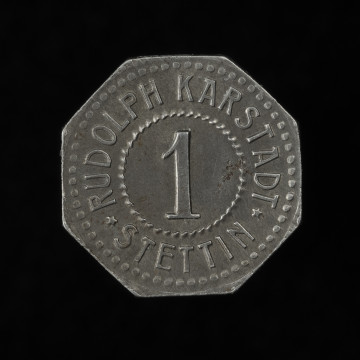
10 silver groschen
1863 — 1875
National Museum in Szczecin
Part of the collection: Scrip
Replacement money was not only used as a means of alternative payment issued by the state, as was the case, for example, in Sweden during the war with Russia, when the "thaler tokens" were minted in copper between 1715 and 1718 to be exchanged for silver thalers after the war, but also as private means of payment in agricultural estates and industrial enterprises. Replacement money was also produced by shops and merchant institutions wishing to improve trade, as in some cases there was not enough coins to give change. This coincided with the unification of currency in the Reich and the transition to a standardised pfennig-mark system in 1873. One of the issuers of replacement money in Szczecin was the Union of Consumers (Consum Verein), an organisation that, during its decades-long existence, changed its name and scope of activity several times. They usually minted coins in zinc, although at one point the coins used were also worth 1 and 2 marks and made of brass. The featured lowest denomination of the zinc series - 5 pfennig, shares the same obverse and reverse as most issues of the Union of Consumers. They carried the name of the issuer, the Szczecin Union of Consumers (Stettiner Consum - Verein E.G.), and the denomination. This arrangement was probably employed not only to reduce production costs but also for purely practical reasons, as no matter how the money was placed, its denomination was always clearly displayed. Replacement money, based on zinc, was not a durable product. Unlike brass or even iron, zinc is a metal with little resistance to both acid and alkaline environments. Hence, relatively few of these coins have been preserved to the present day, and the well-preserved pieces sought by collectors are relatively rare. Mieszko Pawłowski
Other names
5 Pfennig, Notgeld
Author / creator
Object type
token coin
Technique
coining
Material
zinc
Origin / acquisition method
acquisition
Creation time / dating
Creation / finding place
Owner
Muzeum Narodowe w Szczecinie (1945- )
Identification number
Location / status

1863 — 1875
National Museum in Szczecin

3. ćwierć XVI wieku
National Museum in Szczecin

1901 — 1925
National Museum in Szczecin
DISCOVER this TOPIC
National Museum in Szczecin
DISCOVER this PATH
Educational path